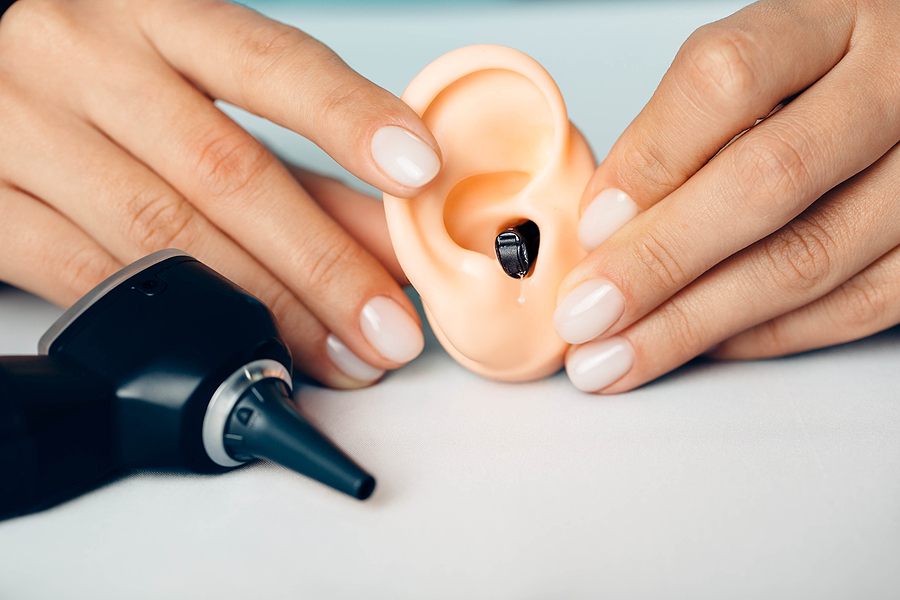
Hearing aids are invaluable for those experiencing hearing loss, providing a way to connect with others and improve quality of life. However, choosing the right hearing aid can be overwhelming, given the variety of styles and features available. Understanding the different types of hearing aids and their applications can help you make an informed decision.
Why You Might Need a Hearing Aid
Hearing loss can stem from many causes, including aging, exposure to loud noises, genetics, or health conditions. If you find it difficult to follow conversations, ask people to repeat themselves frequently, or have trouble hearing on the phone, it could be a sign of hearing loss. A hearing health exam can confirm the extent of your hearing loss and determine if a hearing aid can help.
Hearing aids come in various styles, each designed to suit different levels of hearing loss and personal preferences. Let’s explore the most common types:
1. Behind-the-Ear (BTE) Hearing Aids
Behind-the-Ear (BTE) hearing aids are among the most widely used. They rest behind the ear and are connected to an earmold that sits in the ear canal. BTE hearing aids are larger, providing more amplification and longer battery life, making them ideal for moderate to severe hearing loss.
BTE hearing aids can support advanced features like Bluetooth connectivity and directional microphones, which enhance sound quality and user experience. While they’re bulkier than other types, their durability and ease of handling make them a popular choice.
2. In-the-Ear (ITE) Hearing Aids
In-the-Ear (ITE) hearing aids fit within the outer ear, providing a more discreet appearance compared to BTE hearing aids. They are custom-made to fit the shape of your ear and come in full-shell and half-shell sizes. ITE hearing aids can accommodate various features, including volume control and telecoils, and are suitable for mild to severe hearing loss.
One downside of ITE hearing aids is that they may have shorter battery life due to their smaller size. However, they offer a more inconspicuous look, which appeals to many users.
3. In-the-Canal (ITC) and Completely-in-the-Canal (CIC) Hearing Aids
In-the-Canal (ITC) and Completely-in-the-Canal (CIC) hearing aids are smaller and less visible than ITE hearing aids. ITC hearing aids fit partially in the ear canal, while CIC hearing aids sit entirely within the canal, making them nearly invisible.
These hearing aids are suitable for mild to moderate hearing loss, but their compact design may limit advanced features. Additionally, their size can make them difficult to handle, especially for those with dexterity issues. Shorter battery life is another consideration with ITC and CIC hearing aids.
4. Receiver-in-Canal (RIC) or Receiver-in-the-Ear (RITE) Hearing Aids
Receiver-in-Canal (RIC) or Receiver-in-the-Ear (RITE) hearing aids are a hybrid of BTE and ITE designs. The main unit sits behind the ear, while the receiver is located in the ear canal, connected by a thin wire. This design allows for a smaller and more discreet hearing aid with improved sound quality and flexibility.
RIC/RITE hearing aids are suitable for a wide range of hearing loss, from mild to severe. They offer various features and are less prone to feedback issues compared to other styles. However, they may require more maintenance due to the exposed connections.
When to Get a Hearing Health Exam
If you experience signs of hearing loss, it’s important to get a hearing health exam. A provider will conduct a thorough assessment to determine the type and extent of your hearing loss. This examination usually involves a series of tests, including pure-tone audiometry and speech recognition tests, to gauge your hearing capacity.
Based on the results, the provider can recommend the most suitable type of hearing aid for your needs. Factors such as the degree of hearing loss, lifestyle, and additional features will all play a role in the recommendation. Following professional advice is crucial to ensure you get the best outcome from your hearing aid.
Choosing the right hearing aid can be challenging, but understanding the different types and their applications can make the process easier. Whether it’s a Behind-the-Ear (BTE), In-the-Ear (ITE), In-the-Canal (ITC), or Receiver-in-Canal (RIC) hearing aid, each style has unique benefits. If you’re unsure which is best for you, a hearing health exam can provide clarity. A provider can guide you through the process, helping you select the right hearing aid to improve your quality of life.

Virtual Support Groups for People with Hearing Loss
Matthew Favinger, M.S., F-AAA

Understanding the Anatomy of the Ear
Matthew Favinger, M.S., F-AAA

